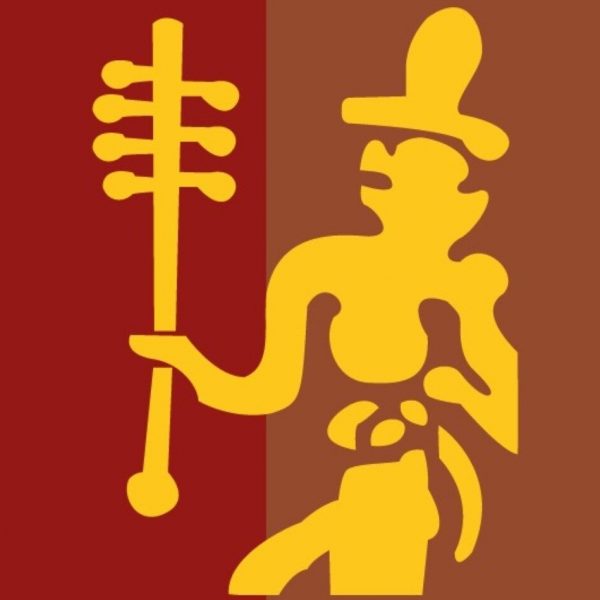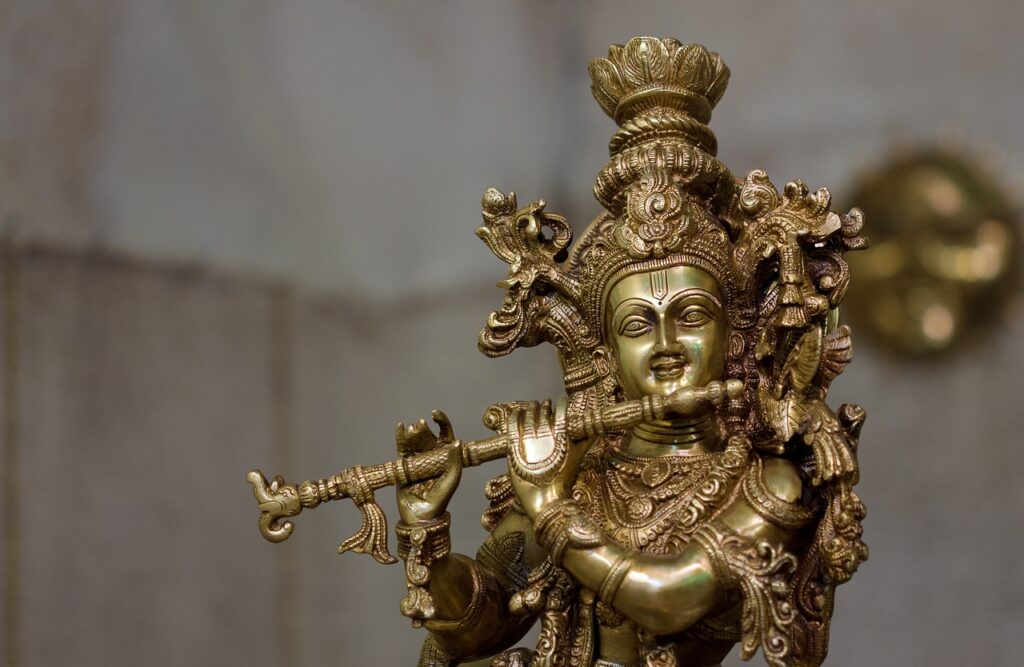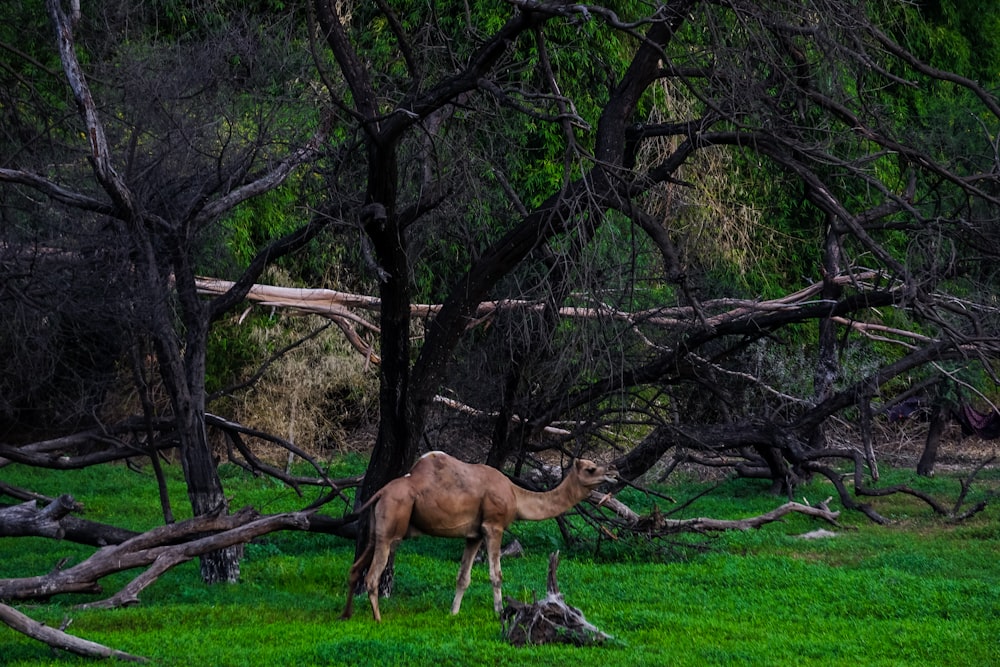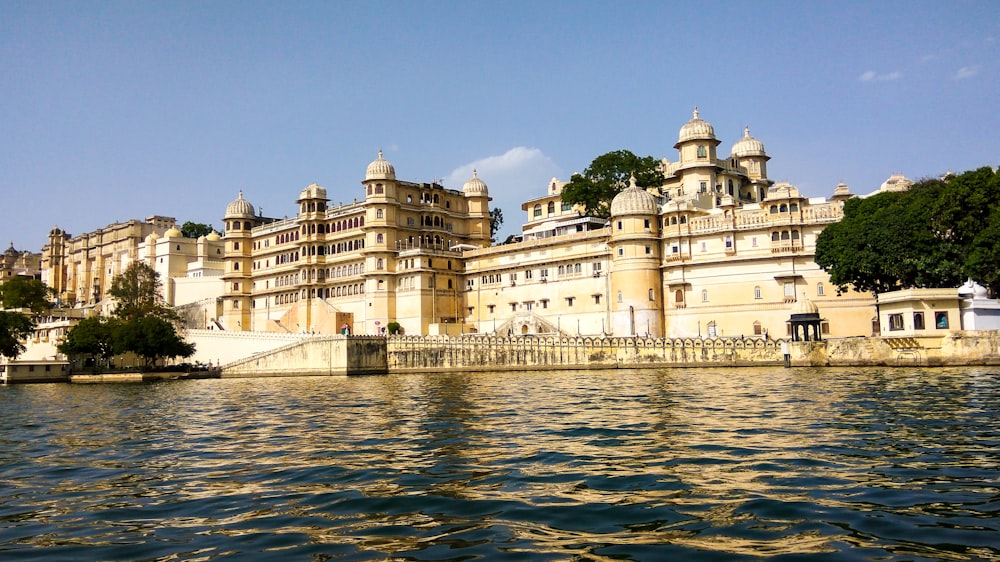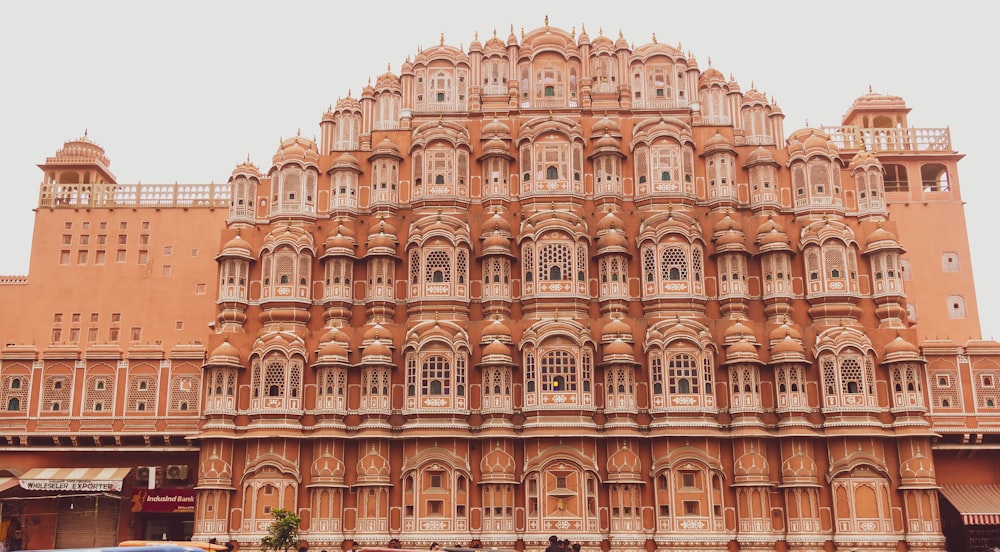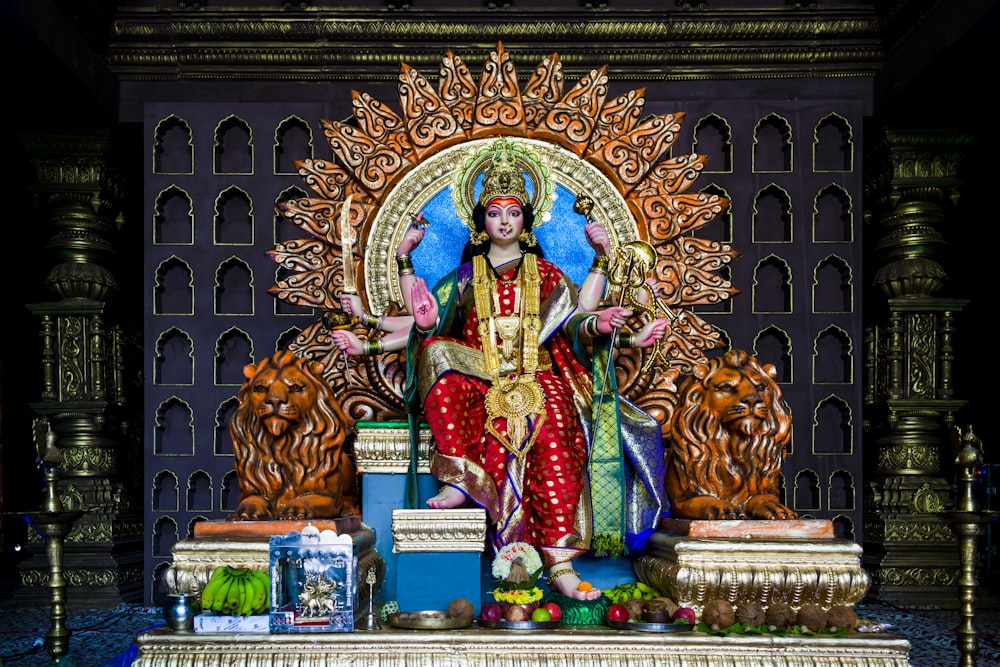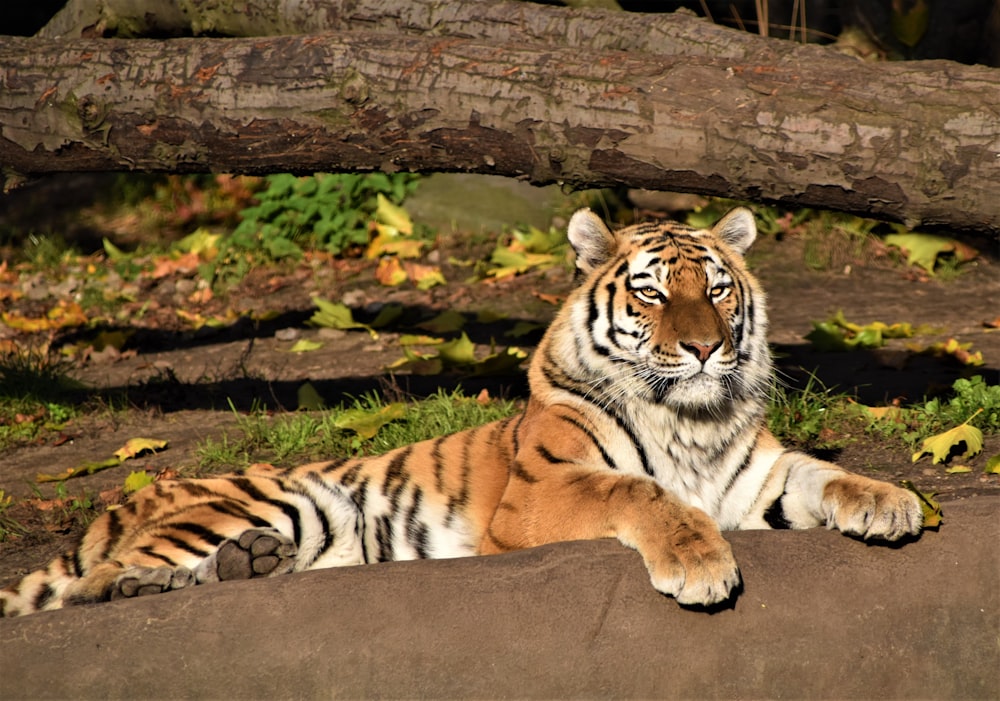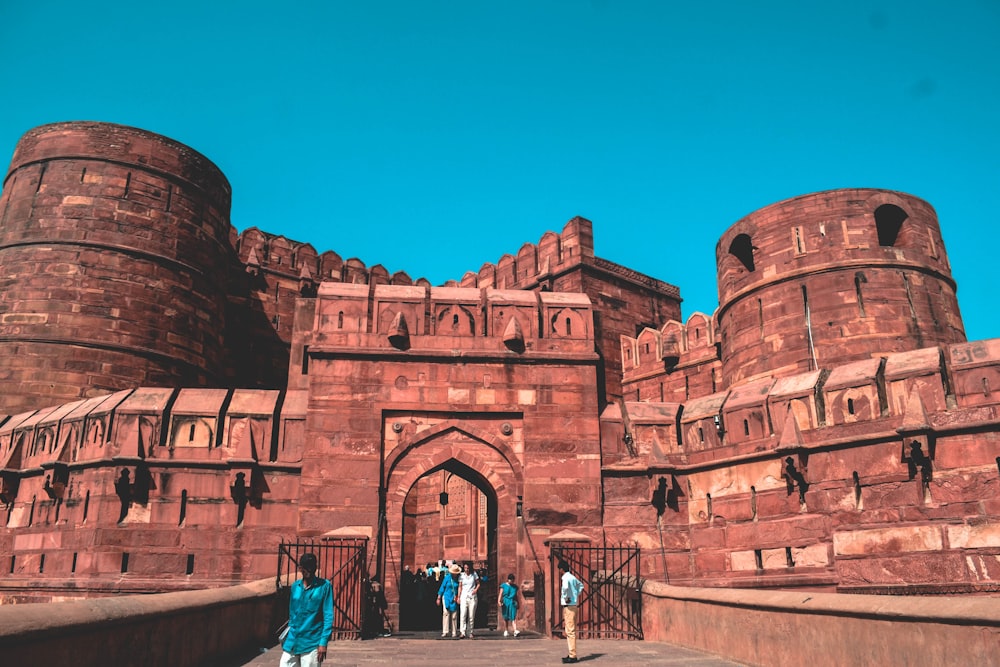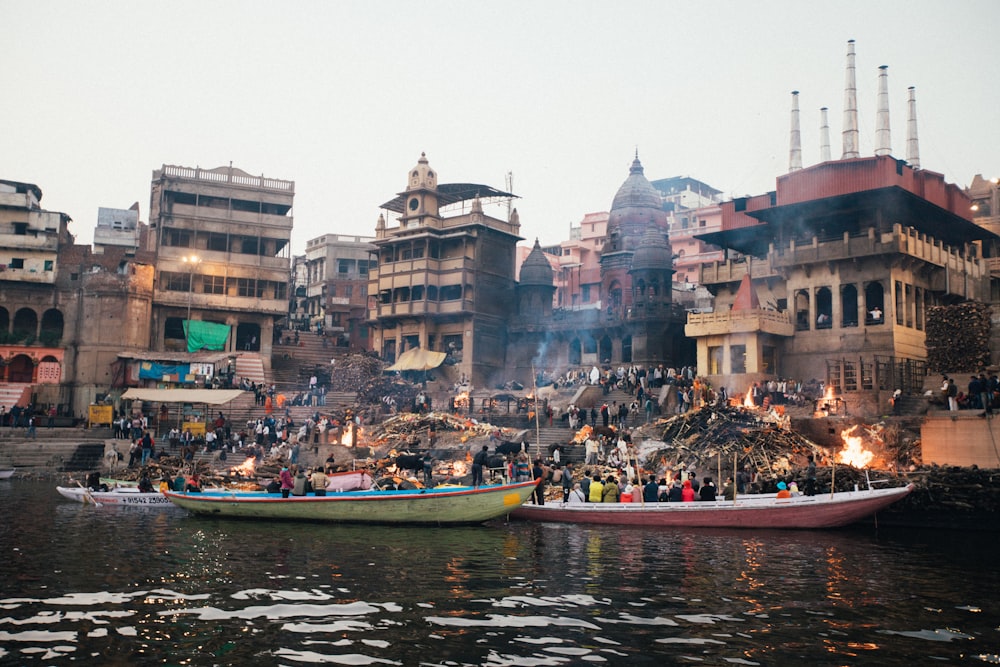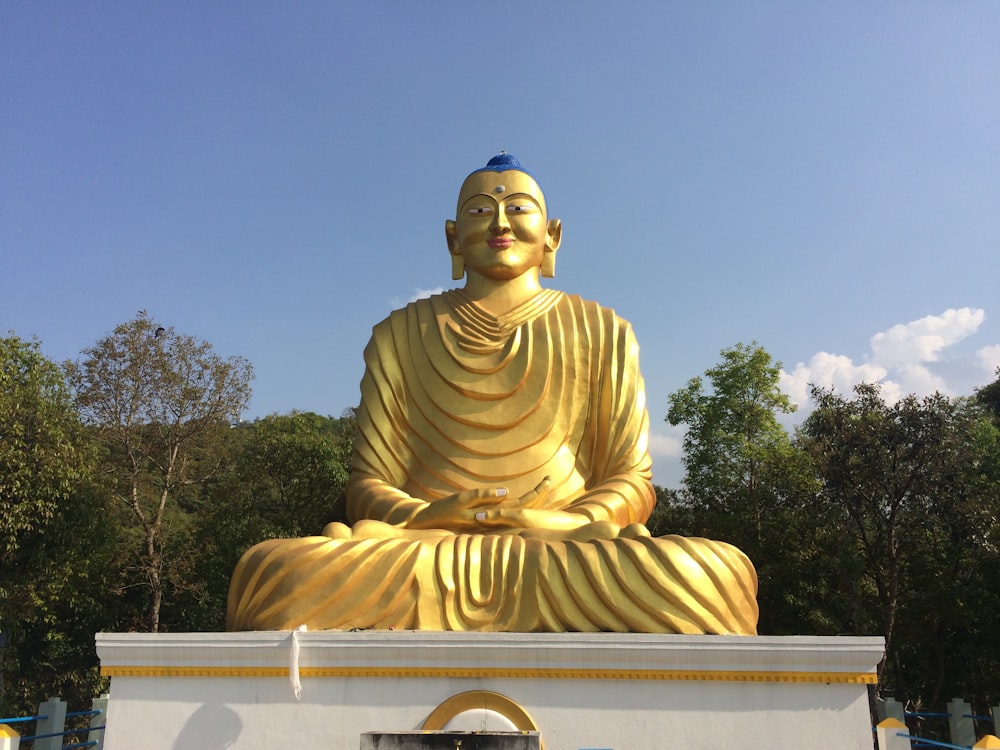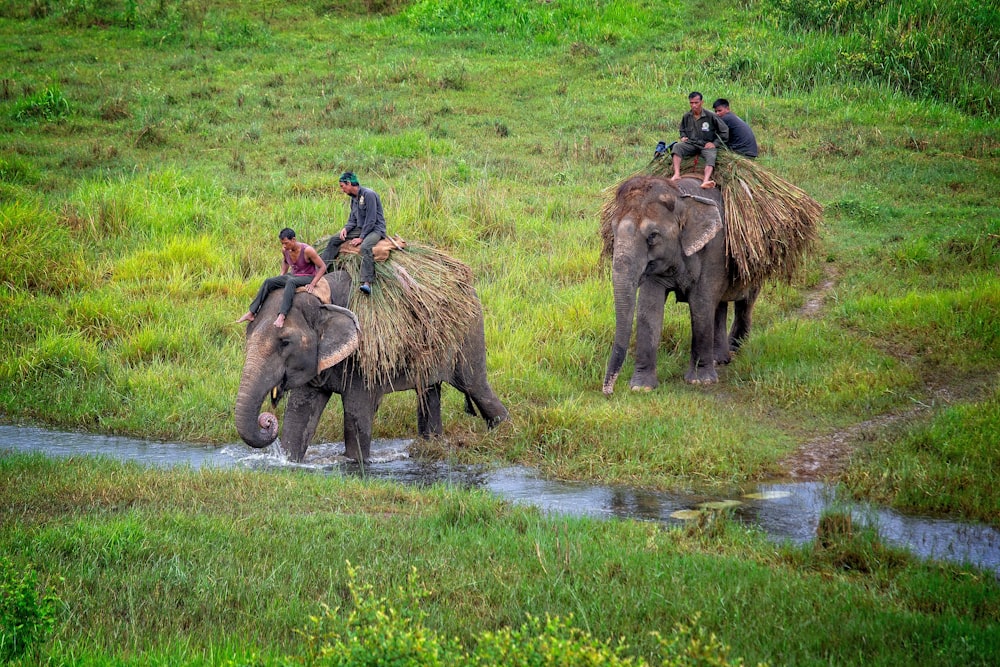Incredible Journey
India and Nepal
GROUP TRAVEL
Join our spectacular journey through India and Nepal
Arts, Food, Cultures, Music, Dance, Nature’s Glory
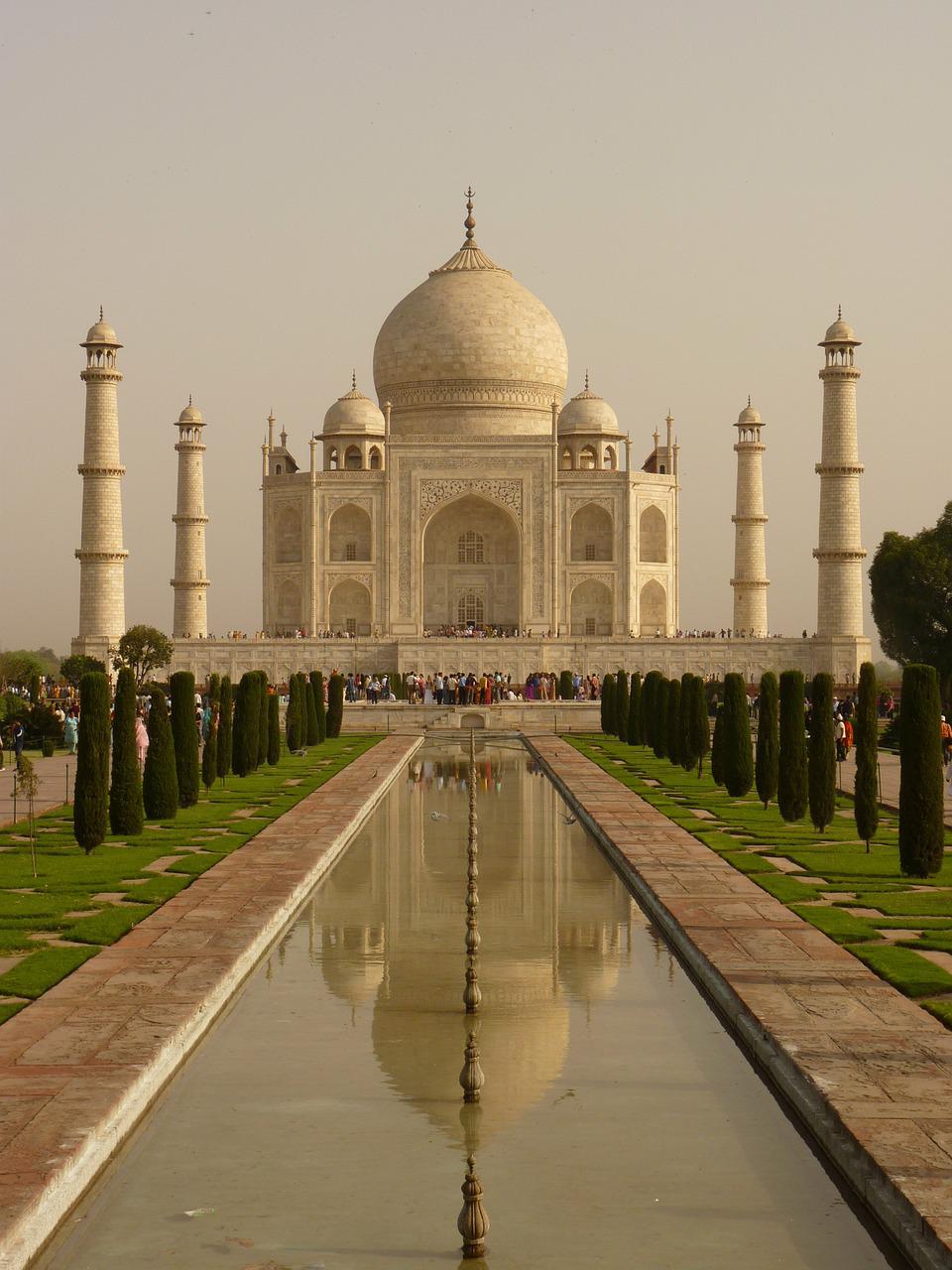
India is not a country but a continent and travelling through it is an experience like no other. Overwhelming in its chaos at first, it gradually unfolds unique delights. You may find it in its majestic forts, monuments and temples; in exquisite crafts; in traditional and contemporary arts; in the bustle of its colorful bazaars; landscapes and nature reserves; in diverse cuisines; a meal at home with a family, or in the unexpected beauty that filters through the chaos.
Join our spectacular journey through India and Nepal, a comprehensive exploration of the Indian subcontinent from south, east, west, and north into the kingdom of Nepal with the magnificence of Mt. Everest. Eclectic cultures, traditions, peoples, this is truly the journey of a lifetime
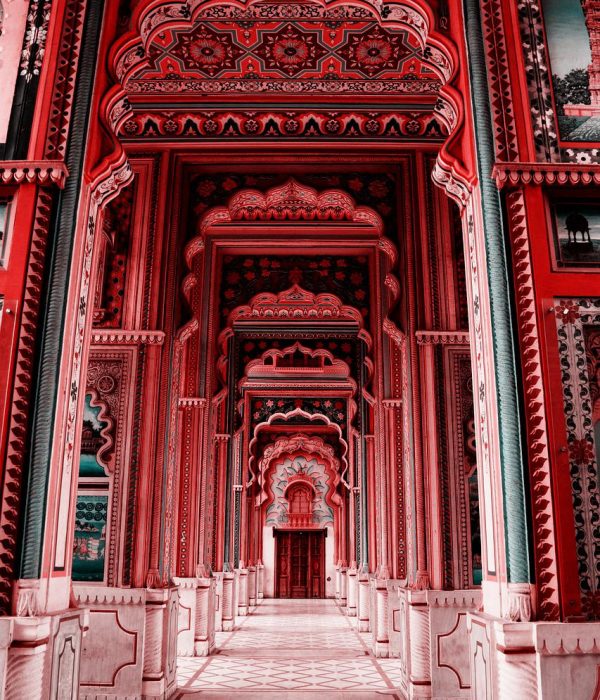
Adventure Awaits
itinerary and price
It's The Perfect Time To
Travel
itinerary
Day 1: Arrive Delhi
Arrive at Delhi Airport. Welcome to India!
You are met by our representative in the arrival area of the airport after you clear all immigration and customs formalities. Depart for your hotel to check in. Delhi stands as the capital of Modern India. Here you can see the mingling of the Old and New India, the ancient and the modern. Delhi is made up of seven ancient cities, spanning the period from the 11th to 20th centuries and has seen the rise and fall of many emperors, leaving behind a plethora of monuments that commemorate the grandeur and glory of bygone ages.
Overnight at the hotel.
Day 2: In Delhi Morning Culinary Experience with Chef in Old Delhi
A food walk with a renowned Chef through crowded markets of Old Delhi to understand and savour street food available in Delhi from some of the oldest food places in the city. During the walk, we will visit several street cafes some 120 years old . We will walk through lively markets, ride rickshaws,and enjoy the delicious street food of Old Delhi. Visit Jama Masjid, the largest mosque in India and the Red Fort before continuing to New Delhi.
Visit Qutub Minar ( 1199, Qutub-ud-Din) & Humayun’s tomb built by emperor Humayun’s wife, took eight years to complete and is regarded as an example of the early Mughal architecture. The combination of white marble and red sandstone was a great influence on later Mughal architecture. It is generally regarded as a prototype of the famed Taj Mahal of Agra.
Your drive takes you along the ceremonial avenue, Rajpath, past the imposing India Gate commemorating the 70,000 Indian soldiers who lost their lives fighting for the British Army during the First World War and bears the names of more than 13,516 British and Indian soldiers killed in the North-western Frontier in the Afghan war of 1919 President House, the palatial building built on 330 acres with a private garden as the official residence of the Viceroy of India during British reign, is now the official residence of the First Citizen and the Parliament House a symbol of Indian democracy.
Later visit Gandhi Smriti.
Gandhi Smriti in the Old Birla House is the sacred place where Mahatma Gandhi’s epic life ended on 30 January 1948. Gandhi lived in this house from 9 September 1947 to 30 January 1948.
Overnight at the hotel in Delhi.
Day 3: Delhi – Kochi (By flight) Flight details
AI 512 Depart Delhi 1430 hrs | Arrive Kochi 1745 hrs
Kochi is also known as ‘Queen of the Arabian Sea’ due to its natural harbor.. Kochi is a city of islands connected to Ernakulam on the mainland by bridges and ferries. perfectly reflecting the eclecticism of Kerala..
Overnight at the hotel.
Day 4: In Kochi
After breakfast check out and proceed for City tour of Kochi at 10:30 am.
Visit the ancient Mattancherry (Dutch) Palace built by the Portuguese in 1557. This palace was presented to the ruler of Kochi as a gesture of goodwill. The Palace’s alternative name “Dutch Palace” resulted from substantial renovations by the Dutch after 1663. The most important feature of the palace is the astonishing murals that adorn some of the palace rooms, depicting scenes from the Ramayana, Mahabharata and Puranic legends connected with Shiva, Vishnu, Krishna, Kumara and Durga.
Today also visit the Jewish Synagogue (closed on Friday, Saturday and Jewish holidays) which is the oldest synagogue in the commonwealth. It is an interesting little place with hand painted willow pattern floor tiles brought from Canton in China in the mid-18th century. The synagogue is in an area which also is one of the centres of the spice trade in the region
Another stop is the St. Francis Church (closed on Sundays morning), the oldest European church in India. It was constructed in 1503 by the Portuguese Franciscan Friars who accompanied the expedition led by Pedro Alvarez Cabral.
Also pay a visit to the amazing Chinese fishing nets operating on principles of physics advanced for their times. Cochin’s Chinese fishing nets found here are the only ones in India. It is believed that traders from the court of the Chinese ruler Kublai Khan introduced these nets here.
Lunch with local Keralan family
This afternoon immerse yourself in the spicy world of authentic Indian curry dishes with an exciting cooking demonstration at the residence of Nimmy Paul at their spice plantation. Mingle with a traditional Syrian Christian family, enjoy & experience their hospitality as well as learn the intricacies of Kerala cuisine
In the evening watch the very elaborate makeup and costuming being done on Kathakali dancers. Later, enjoy a highly dramatic Kathakali Dance performance outdoors, illuminated by towering brass oil lamps. Kathakali, literally meaning `story-play’, is a dance-drama originated in the 17th century in Kerala, Its roots can be traced back to earlier times. Koodiyattom, the only surviving form of Sanskrit theatre in India has been preserved in Kerala for centuries, now, by a small community called Chakyar is a part of their hereditary temple service. Krishnanattom, another form of dance-drama, is performed at the famous Sree Krishna temple in Guruvayoor as an offering to the Lord. Besides these two forms, elements from martial, ritualistic, socio-religious arts have also influenced the making of Kathakali. Though Kathakali is only 300 years old, a great deal of enrichment and refinement has taken place in every aspect of its technique. Scholars are of opinion that Kathakali is the result of a fusion between all Indian theatre tradition represented by Koodiyattom and the indigenous tradition of folk-dance forms
This evening pick up from the Hotel at 5 pm for theatre performance of Kathakali.
Overnight at the hotel.
Day 5: Kochi – Munnar (by surface)
Munnar is a magnificent hill station in the Western Ghats at about 5000 feet above sea level. This is the major centre of Kerala’s tea industry. Munnar means three rivers and the town is located at the confluence of 3 mountain streams – Muthirapuzha, Nallathanni and Kundala. Munnar has lakes, forests and several tea estates. Anamudi, the highest peak in South India (2695 m/8883 ft.) is nearby. Munnar was the British Government’s Summer Resort in the South and it has been the favourite summer resort for centuries.
Rest of the day at leisure. Overnight at the hotel.
Day 6: In Munnar
Trekking at Letchmi hills – We drive around 3 kilometres towards Cochin from Munnar to the starting point of Letchmi hills trek.
The trek will start at the height of 1420 meters MSL through the tea plantation ( about 30 to 40 minutes,) The remainder of our trek will be on the ridge which offers beautiful views through grasslands, one side will be rocky mountain slope and the other side will be tea plantations, patches of Shola forest etc…, if the sky is clear we can see the Anamudi “highest peak in S. India” and the reservoir of Idukki Dam while enjoying a specially prepared picnic lunch. We pass through the Nature Zone of Coffee and Cardamom plantations Our final stop on the trek is the tea plantations. The highest point of this trek will be about 1950 meters,
Later enjoy Tea Testing at Lockhart, a 30-minute drive from Munnar town. On reaching the Factory, you will follow the tea trail to the area where the ladies pick tea leaves.
You may join them in picking and weighing the tea leaves, interacting with the workers to understand their way of life and to visit the home of one of the pickers for a cup of tea,
Overnight at the hotel.
Day 7: Munnar – Periyar (by surface)
The Spice Capital of India, Thekkady (Periyar). . The aroma of spices fills the pristine air of the countryside to reach the Periyar Wildlife Sanctuary, one of the premier reserves of Southern India, and home of the wild elephant, the bison, antelopes, Langurs and sambars. Upon arrival check in at the hotel.
In the evening Kalaripayattu a martial art, which originated in Kerala. The word kalari first appears in the Tamil Sangam literature to describe both a battlefield and combat arena. The word kalari tatt denoted a martial feat, while kalari kozhai meant a coward in war. Each warrior in the Sangam era received regular military training. One of the oldest fighting systems in existence, it was originally practised in northern and central parts of Kerala and southern parts of Tamil Nadu.
Overnight at the hotel.
Day 8: Periyar – Kumarakom (by surface)
Enjoy a nature walk around its 12 acres is an education in botany.
Later, proceed for a spice plantation visit.
Depending on the season, you could take a day trip and visit a neighbouring pepper plantation. Walk amidst the rows of vines creeping upwards on trellises. The correct time to pluck the peppercorns is when they are beginning to redden, just before they are completely ripe. Try your hand at it, but be sure to wash up before touching your eyes or nose! Walk past the rows of mats on which the plucked peppercorns are left to dry. The scent of pepper mingles with the fresh mountain air. This is the starting point of the centuries old spice trade and that delicious flavour which makes such a difference to foods worldwide.
Later depart for Kumarakom.
The backwaters in Kerala is a network of 1500 kms of canals both manmade and natural, 38 rivers and 5 big lakes extending from one end of Kerala to the other. Before trucks became popular, the main cargo transportation was through backwaters by ‘Kettuvallams’. Kettuvallam means ‘stitched boat’. Kettuvallams or Houseboats (Rice boats) are country boats that were used in the early days for the transport of goods from the isolated interior villages to the towns. With the advent of roads, bridges and ferry services, gradually the Kettuvallams went off the scene. Now these Kettuvallams are back again as a major tourist attraction. A ride on a Kettuvallam is a fabulous way to explore the fascinating beauty of the backwaters.
On arrival, check in at the hotel for overnight.
Day 9: In Kumarakom
Located on the banks of the Vembanad Lake, the bird sanctuary is spread across 14 acres. The Kumarakom Bird Sanctuary, an ornithologist’s paradise is a favourite haunt of migratory birds like the Siberian stork, egret, darter, heron and teal. A visit to the bird sanctuary, set within the lush acres of wooded land nearby, acquaints you to the variety of migratory birds that flock in thousands, some from the Himalayas, some even from as far as Siberia. In addition, you can get thrilled of the native kingfishers ablaze in psychedelic colours, experience a walk under rookeries of egrets and night herons or lone golden-backed woodpeckers and even delight in the acrobatics of the paradise fly-catchers.
Later a day cruise on a houseboat with lunch.
Overnight at the hotel.
Day 10: Kumarakom – Kochi (by surface)
Morning is at leisure. Check out and transfer to Kochi airport hotel for overnight stay and flight early next morning.
Overnight at the hotel.
Day 11: Kochi – Udaipur (By flight)
6E 728 Depart Kochi 0715 hrs | Arrive Bangalore 0820 hrs
6E 687 Depart Bangalore 1005 hrs | Arrive Udaipur 1225 hrs
On arrival, transfer to the hotel and check in.
Udaipur
Dotted with marble palaces, hibiscus – laden gardens and fountain pavilions, Udaipur appeals to the imagination of poets and painters, travellers and writers like no other city in the country. The city’s inherent romance and beauty and its remarkable past redolent with episodes of heroism and splendour, continue to enthral the visitor even today. Udaipur, the City of Dawn, looms like a vision in white. Surrounded by hills and mountains and set on the edge of three lakes which lead to a fertile plain, it is a truly enchanting city. Narrow streets lined with vividly coloured stalls, gardens, temples and palaces mirrored in the placid blue waters of Lake Pichola add to the magic of Udaipur.
Evening Exclusive Boat ride at Lake Pichola
Early this evening enjoy a private boat ride on the placid waters of Lake Pichola. From the lake you have a wonderful view of the City Palace stretching along the east bank, while the south bank has pleasant gardens running down to the waterside. (Boat ride depending upon the water level of the lake).
Overnight stay at the hotel.
Day 12: In Udaipur
The City Palace complex houses the private residence of the Maharana of Mewar ( “kings of kings “) the oldest royal lineage of the country. This palace complex consists of four major and several minor palaces forming a single breath-taking façade of almost 900 meters overlooking the Pichola Lake.
The main part of the palace is now preserved as a museum displaying a large and diverse array of artefacts including the Crystal Gallery and the armoury museum, a huge collection of protective gear and weapons including the lethal two-pronged sword.
The Durbar Hall or Hall of Public Audience of the Fateh Prakash Palace is the place for royal ceremonies even today. Family festivals are held here and the Maharana entertains visiting dignitaries and Heads of State.
We explore the markets and bazaars and visit the Jagdish Temple built in 1651 ornamented with excellent carvings and a bronze figure of the Garuda. Proceed to the Garden of the Maids of the Honour constructed in the early 18th century as a venue for
royal parties.
Return to the hotel and rest of the day at leisure.
Overnight at the hotel.
Day 13: In Udaipur
Visit Eklingji and Nagda temples.
Eklingji, a little village with several ancient temples situated 22 kms away from Udaipur. The Siva temple in the village itself was originally built in 734. The walled complex includes an elaborately pillared hall under a large pyramidal roof and features a four faced Siva image of black marble.
Nagda is located 2 km north of Sri Eklingji. It has temples dating back to the 6th century, including the famous 11th century Sas-Bahu (mother-in-law & daughter-in-law) twin temples with intricate architecture and carvings and the Adbhut Ji temple. Both temples are at the edge of a lake and submerged within the lake are several later structures.
Rest of the day at leisure.
Overnight at the hotel.
Day 14: Udaipur – Jodhpur (by surface)
Breakfast at the hotel. Check out and drive to Udaipur enroute visiting Ranakpur (Audio Guide will be provided in Ranakpur).
Ranakpur is widely known for its marble Jain temple, and for a much older Sun Temple which lies opposite the former. The renowned Jain temple at Ranakpur is dedicated to Adinatha. Light coloured marble has been used for the construction of this grandiose temple which occupies an area of approximately 60 x 62 meters. The temple, with its distinctive domes, shikhara, turrets and cupolas rises majestically from the slope of a hill. Over 1400 marble pillars, carved in exquisite detail, support the temple. The construction of the temple and quadrupled image symbolize the conquest of Tirthankara in four cardinal directions and hence the cosmos
Later, continue to drive to Jodhpur. On arrival, check in at the hotel.
Among Rajasthan’s many princely settlements, Jodhpur is one of the most distinctive. This five hundred year old settlement was the headquarters of the RathoreRajputs, celebrated for their tales of daring. This princely state is also referred to as “The Blue city”. Founded in 1459, the oldest of Rajputana’s great cities, Jodha’s Jodhpur preceded Bika’s Bikaner by thirty years, Udai Singh’s Udaipur by more than a hundred and Jai Singh’s Jaipur by nearly three centuries. Dominated by one of India’s mightiest fortresses, the capital of the warrior Rathores has played hostess to kings and emperors and tsars; to humble saints and celebrated soldiers; to many a distinguished statesman of our times and of times gone by.
Not the richest, though perhaps the most charming, Jodhpur, the gate-way to the Great Indian Thar Desert, stands alone as the cultural and spiritual capital of this, the Land of Kings.
Day 15: In Jodhpur
Breakfast at the hotel.
Visit the Mehrangarh Fort. a hundred feet on a perpendicular cliff, four hundred feet above the skyline of Jodhpur. Burnished red sandstone, imposing, invincible with a strange haunting beauty that beckons. Much has been written about the Citadel of the Sun, for truly, it is one of the most impressive in all Rajasthan. So colossal are its proportions that Rudyard Kipling called it “the work of giants”. Today, it is acknowledged as the finest living example of a Hindu fortress.
We experience this majestic fort and visit the Moti Mahal (Pearl Palace), Phool Mahal and the Sheesh Mahal. Later visit the Jaswant Thada, a collection of royal cenotaphs built in white marble.
Bishnoi village safari.
The small oasis desert village of Jodhpur, known as the Bishnoi Village, Bishnoi do not drink alcohol or eat meat.. Likewise, they are also known for their compassionate cultivation of dairy cattle. Moreover, Bishnoi ladies are also notable for breastfeeding the infant pronghorns who have been separated from their mothers. Have a true experienc of tribal India, meeting and understanding the rural life, culture & traditions. Getting to know the lives of local potters, yarn weavers, shepherds, farmers and learning that they are content and happy away from the world outside is an amazing feeling.
Later, enjoy shopping in the colorful local bazaars of Jodhpur.
In the evening, drive to Osian which is approx 1 hr from Jodhpur
Campfire and Marshals give this place great ambience. Musicians will be playing
traditional music as guests enjoy the sun set. Dinner will be a great dining experience under the stars for the guests.
Return and overnight at the hotel.
Day 16: Jodhpur – Jaipur (By Surface
Jaipur is known as the “Pink City”, Jaipur is the capital of Rajasthan. As you drive through the old part of town, the city blooms during the day in a kaleidoscope of colour and sound.
Evening enjoy Cooking demo & dinner with a local family
The hospitality of the Indians is legendary. In Sanskrit Literature the three famous words ‘Atithi Devo Bhava’ or ‘the guest is truly your god’ are a dictum of hospitality in India. Indians believe that they are honoured if they share their mealtimes with guests. Even the poorest look forward to guests and are willing to share this meagre food. Indian women will not let a guest go away unfed or unhappy from her home.
Overnight at the hotel in Jaipur
Day 17: In Jaipur
Amber Fort Blessing ceremony at the temple. Amber Fort is a marvellous example of Rajput architecture with its terraces and ramparts reflected in the Maota Lake below. The interior of the fort has various royal halls decorated with intricate ivory, mirror and glass work complemented by exquisite wall paintings. As you move between the rooms of this magnificent structure feel the history and visualise the pomp and grandeur of a kingdom never conquered.
Later proceed for visits of Jaipur city.
This afternoon venture into the city, You will visit the City Palace Museum where you can see an imposing blend of traditional Rajasthani and Mughal Art. The museum is resplendent with its collection of robes of royal princes, carpets, an armoury of old weapons, miniature paintings portraying court scenes, battle scenes and processions, Also visit the awe inspiring Jantar Mantar and a photo visit at the Hawa Mahal (Palace of Winds) – a five storied wonder with a spectacular pyramidal facade and overhanging windows with latticed screens, domes and spires.
Located in the heart of the walled city, The City Palace Complex gives you an idea about the farsightedness of the founder of Jaipur Sawai Jai Singh. He left behind a legacy of some of the most imposing and magnificent architecture, art and craft structures in the city. Sawai Jai Singh built many buildings but some of some of the structures were also built by later rulers and some in the twentieth century, The palace is a blend of Mughal and Rajasthani architecture and the royal family still lives in a part of the palace.
On entering the complex in front of the palace proper lies the Mubarak Mahal, the palace of welcome or reception. Sawai Madho Singh built the palace in the nineteenth century. It was used as a reception centre for visitors. The building now forms the Maharaja Sawai Man Singh II Museum and on display here are a wide array of royal costumes, some very exquisite and precious Pashmina (Kashmiri) Shawls, Benaras silk saris, Sanganeri prints and folk embroidery. An unusual display is that of voluminous clothes worn by Maharaja Sawai Madho Singh I (ruled 1750-68).
Across the road from the palaces is the famous “Jantar Mantar”, one of the five observatories in India. Built by Sawai Jai Singh, this is one of the largest and the best preserved. A passionate hobby of the king, Astronomy, numerology, led him to execute this observatory and create a collection of complex astronomical instruments chiselled of stone, most of which continues to provide accurate information to this day. The most striking instrument is the Brihat Samrat yantra Sundial, an imposing yellow edifice to the far right of the observatory complex which has a 27m high gnomon arm set at an angle of 27 degree. The shadow this casts moves up to 4m in an hour, and aids in the calculation of local and meridian pass time and various attributes of the heavenly bodies, including declination the angular distance of a heavenly body from the celestial equator and altitude.
Evening visit Spice Market Walk.
Criss-crossing narrow lanes, tiny shops with colourful wares, people haggling for a better deal…welcome to the bazaars of India . You can find them everywhere, and even juxtaposed against high rises and glitzy malls, these bazaars fiercely hold their own. Care to try the fiery tears-in-the-eyes signature Indian spice mixes?.. Here, you can not only buy the spices, but can also get them dry roasted and ground into the masala mix of your choice . It’s not uncommon to see ladies patiently waiting, with a bagful of spices and a recipe that has been handed down generations.
Overnight at the hotel.
Day 18: In Jaipur
Early morning proceeds for a cultural connection tour to witness how the locals start their day. You will be delighted to visit some early morning vegetable, flower market, and walk through some famous narrow alleys of the city which have famous age old chaiwala, pakodewala (local snack)sold for the last 100 yrs.
Later we will take you to the Govind Dev ji temple for the morning prayer ceremony, hundreds of devotees from all walks of life sing with devotion and prayers to Lord Krishna.
Return to the hotel for breakfast.
Bagru block printing
Known for its unique art of Bagru Block Printing, Bagru has emerged as one of the industrial areas for textile printing in Rajasthan with over a 100 small & large Factories.
Our long-lasting association with the community offers a unique workshop which is not restricted to one shed or a factory but more than 5-7 local houses, with each having expertise in skills like making natural colors, carving designs on the wooden blocks, printing the blocks on cloth, boiling the cloth after the printing process.
HIGHLIGHTS OF “BAGRU Village visit
- Understanding the Industry from local perspective
- Understanding the process of Color Making
- Understanding the process of Block Printing
- Witness the Artisans carving detailed designs on wood blocks
- Visiting the local houses & knowing their role in the process
- “Do it yourself” activity.
Return to Jaipur.
Evening is at leisure to enjoy shopping in the colorful bazaars of Jaipur.
Overnight at the hotel.
Day 19: Jaipur – Ranthambhore (By Surface)
Abhaneri is a small village with one of India’s deepest and largest step wells. Step wells are unique to India. They were used as cool places of resort, as pools for ritual cleansing before a temple visit and as a water supply for dry weather.
Later continue to drive to Ranthambore.
Ranthambore Park is famous for tigers and due to conservation efforts the tiger population has stabilized if not Increased The tigers can be spotted often during the day at their normal pursuits– hunting and taking care of their young ones. Ranthambhore is one of the best places to see these majestic predators. Ranthambhore is a heritage site because of the picturesque ruins that dot the wildlife park.
There are lake palaces, ‘chhatris’, old fortifications and a majestic 1,000-year-old fort, overlooking the park. The lovely Jogi Mahal is located at the foot of the fort and gives a magnificent view of the Padam Tlao, painted white with water lilies.
Dinner and overnight at the hotel.
Day 20: In Ranthambore
Early this morning leave the Hotel to enjoy a game drive with the naturalist in the Jungle to see wildlife by non A/c Open Canter on sharing basis. Return to the hotel for Breakfast by 10:00 AM. Rest morning is free to relax in the hotel till later afternoon.
In the afternoon proceed again to enjoy another game drive in the national Park by non-A/c open canter on sharing basis with the naturalist.
Return to the hotel.
Dinner and overnight at the hotel.
Day 21: Ranthambore – Agra (By Surface)
Enroute visit Fatehpur Sikri.
Fatehpur Sikri. – The imperial city of the Mughal dynasty between 1571 and 1584, Fatehpur Sikri was built by Mughal Emperor Akbar. The architectural grandeur of this deserted city cannot be described in words and one can only experience the aura of its magnificent edifices by seeing them. Fatehpur Sikri is the most popular day excursion from Agra, the city of Taj and capital of invincible Mughals,
Today, as one enters Sikri from the Agra Gate, one of nine gateways to the palace complex, Diwan-I-Aam, or the hall of public audience appears first. It is a huge rectangular walled-in courtyard where petitions were heard, proclamations made, ambassadors received and entertainment programmes held. Ponder the mysterious desertion of this capital city that was dramatically abandoned a few years after it was built. It was a veritable fairy tale city and its ‘ruins’ are still in a pristine condition. It is not hard to imagine what the court life must have been like in the days of its grandeur.
Later drive to Agra and check-in the hotel.
Later in the evening proceed to Mehtab Bagh which is situated at the backside of Taj Mahal across the river Yamuna and enjoy the sunset view of Taj Mahal.
Overnight at the hotel.
Day 22: Agra – Delhi (By Surface)- Varanasi (By flight)
Wake up early morning today to visit the Taj Mahal during the Sunrise.
That magnificent monument of love – The Taj Mahal, was built by an emperor in memory of his beloved queen. Construction of the Taj Mahal began in 1631 and is believed to have taken 22 years to complete, with over 20,000 craftsmen working round the clock. The design and construction are said to be that of the legendary architect, Ustad Ahamad Lahori. Legend has it that once construction was completed, Shah Jehan had Lahori’s hands cut off, and and his eyes blinded, so he would never be able to duplicate the structure. What makes the Taj Mahal unique is its perfect proportions, distinct femininity, medium of construction, and ornamentation. Its marble exterior reflects rose and golden tints at sunrise and sunset, while it is dazzling white during the day. It is impossible to visualize the Taj Mahal in any surrounding other than its paradoxical garden. Paradise, in Islam, is visualized as a lush garden where running streams flow. When the Mughals brought this concept to India they elevated it to heights of incomparable artistry.
Note: Taj Mahal is closed on Friday
Post breakfast at the hotel, check out and visit Agra Fort.
Visit the impressive Agra Fort, where you are taken through the chambers of this royal residence. As you drive through the city, enjoy local life and bazaars and the hustle-bustle of everyday India.
Agra Fort is a UNESCO World Heritage site located in Agra, India. The fort is also known as Lal Qila, Fort Rouge, and Red Fort of Agra. It is about 2.5 km northwest of its much more famous sister monument, the Taj Mahal. The fort can be more accurately described as a walled palatial city.
It is the most important fort in India. The great Mughals Babur, Humayun, Akbar, Jehangir, Shah Jahan, and Aurangzeb lived here, and the country was governed from here. It contained the largest state treasury and mint. It was visited by foreign ambassadors, travelers, and the highest dignitaries who participated in the making of history in India.
Later drive to Delhi airport for flight to Varanasi.
Flight details:
Indigo 6E 167 Depart Delhi 1830 hrs | Arrive Varanasi 1955 hrs
On arrival in Varanasi, transfer to the hotel and check in.
Varanasi, also known at various times in history as Kashi (City of Light) and Benares, this is one of the world’s oldest continually inhabited cities and is regarded as one of Hinduism’s seven holy cities. Pilgrims come to the ghats lining the River Ganges here to wash away a lifetime of sins in the sacred waters or to cremate their loved ones. It’s a particularly auspicious place to die, since expiring here offers moksha (liberation from the cycle of birth and death), making Varanasi the beating heart of the Hindu universe. Most visitors agree it’s a magical place, but it’s not for the faint-hearted. Here the most intimate rituals of life and death take place in public, and the sights, sounds and smells in and around the ghats – not to mention the almost constant attention from touts – can be overwhelming. Persevere. Varanasi is unique, and a walk along the ghats or a boat ride on the river will live long in the memory.
Overnight at the hotel.
Day 23: In Varanasi
Early Morning Boat Ride: Early this morning, leave your hotel around 0530 for an early morning sunrise boat excursion on the holy River Ganges. A rowing boat ride at dawn along the Ganges is the quintessential Varanasi experience. The early-morning light is particularly good for photography and to see life (and death) as it unfolds along the ghats is a truly unique experience. An hour-long trip south from Dashashwamedh Ghat to Harishchandra Ghat and to Manikarnika Ghat and back is popular. Be prepared to see a burning corpse at Harishchandra and Manikarnika Ghat. Photography is strictly not allowed.
After boat ride, drive back to hotel and rest.
Later in the morning, hop on a rickshaw and ride through the narrow streets to see local life. Also visit Banaras Hindu University, Kashi Vishwanath Temple & Durga Temple.
Banaras Hindu University is one of the oldest educational centers in India. The Banaras Hindu University was built in 1917. The university was founded by Pandit Madan Mohan Malviya as a centre for the study of Indian art, culture, music and Sanskrit. The university campus is spread over five square kilometers and houses the Bharat Kala Bhavan. The Bhavan has a fine collection of miniature paintings, sculptures from first to fifteenth centuries, old photographs of Varanasi and brocade textiles.
Kashi Vishwanath Temple: The temple is located in the premises of the Banaras Hindu University. The temple, built by the Birlas, was planned by Pandit Madan Mohan Malviya. Unlike many other temples in Varanasi, this temple is open to all irrespective of caste or creed.
Durga Temple: Durga temple is also known as the Monkey temple (because of the presence of huge number of monkeys), situated in the Durga Kund, Varanasi. The temple is dedicated to the Goddess Durga. It was built in the 18th century. Durga temple was constructed by a Bengali Maharani in the north Indian Style with multi-tiered shikhara. It is believed that the statue of Goddess Durga is not human made; it appeared on its own in the temple.
Sarnath.
It was at Sarnath, that the Buddha gave his first sermon to the five disciples; preaching the middle path to find ‘Nirvana’. Realizing the sanctity of the place, emperor Ashoka, in the 3rd Century BC lavished riches on it, creating some of the finest monuments and legacies for future generations. The 34-meter high Dhamek Stupa is the most remarkable structure as it is believed to mark the spot where the Buddha preached his sermon. ‘Chaukhandi’ stupa, raised by the great Mughal emperor Akbar in 1555 AD, is believed to be the place where Lord Buddha met his five disciples. The majestic Ashoka pillar records the visit of emperor Ashoka to Sarnath. It was originally adorned by a capital of four lions – the symbol of modern India. The capital now is housed in the adjoining Sarnath museum. The modern Mahabodhi Society temple ‘Mulgandha Kuti Vihar’, opened to public in 1931, has a series of brilliant frescoes by the Japanese artist K. Nosi and a life size golden statue of the Buddha. A ‘Bodhi’ tree growing here is believed to be the offspring of one under which Lord Buddha had attained enlightenment.
At sunset take a boat ride on the holy river Ganges and witness Aarti on the Ghat.
The Aarti is performed on a stage by a group of young priests facing towards the river. It is a special ritual for the invocation of the River Ganga, which as per the sacred belief of the Hindus is a Goddess who descended from heaven to earth
The Aarti takes place every day and takes approximately one hour. Time depends on the season
Overnight at the hotel.
Day 24: Varanasi – Kathmandu (By Flight)
Flight details: TBA
On arrival in Kathmandu, transfer to the hotel.
NEPAL – The highest mountain peak in the world (Everest – 8848 m), The birthplace of Lord Buddha (Lumbini), The Living Goddess (Kumari), The non-rectangular flag, Kathmandu the capital city with as many idols as men and as many temples as houses.
As Nepal is also one of the world’s greatest trekking paradises, there is a unique concentration of art, culture and tradition in the Kathmandu valley.
Overnight at the hotel.
Day 25: Kathmandu – Dhulikhel (by surface)
Drive to Dhulikhel.
Enroute visit Bhaktapur.
BHAKTAPUR DURBAR SQUARE
Bhaktapur or Bhadgaon literally ‘the City of Devotees’ is the smallest city in the Kathmandu valley. Its Main Square or ‘Layaku’ is famous for the 15th century Palace of 55 Carved Windows with the Golden Gate as a royal entrance. In front of the palace building are innumerable temples and architectural showpieces including the Lion Gate, the statue of King Bhupatindra Malla mounted on a giant stone pillar and the stone temple of Vatsala Devi, another beautiful example of Shikhara-style architecture. There is a bronze bell on the terrace of the temple, which is also known as the Bell of Barking Dogs, erected in 1737 by King Ranjit Malla.
Continue to drive to Dhulikhel. On arrival, check in at the hotel.
Dhulikhel, a place filled with majestic beauty is located in Kavrepalanchok district at the Eastern rim of Kathmandu Valley, south of the Himalayas at 1550m above sea level and is situated 30 km southeast of Kathmandu.
Overnight at the hotel.
Day 26: Dhulikhel – Kathmandu (by surface)- Pokhara (by flight)
Drive to Kathmandu airport for a flight to Pokhara.
On arrival check in at the hotel.
Pokhara: The rare combination of snow-clad peaks and snow fed lakes and rivers has helped to make the valley of Pokhara one of the most picturesque natural attractions in the kingdom. It is located in the geographical center of Nepal between Kathmandu and Bhairahawa, where Great Himalayas peaks can be admired from a close distance. The Vindhyavasini Temple overlooks a modest amusement park. Phewa Lake, skirted by a large number of unpretentious lodges and simple restaurants, is the most congenial spot for visitors.
Evening enjoy boat ride on Phewa lake
Rest of the day free to relax. Overnight at the hotel.
Day 27: In Pokhara
Early morning drive to Sarangkot- approximately 5 Km drive.
(Weather permitting) Today, early in the morning, we will drive to Sarangkot (5 Kms from lake side for sunrise view. After spending some time, enjoying the sunrise view, we will drive back to the hotel for breakfast.
Later set out for the Pokhara city tour.
Devi’s fall: Locally known as Patale Chhango (Hell’s fall), Devi’s fall is an amazing waterfall lying about 2 km south-west of Pokhara airport on the highway to Tansen. It was named after Devi, a Swiss lady who was swept away when the floodgates were accidently opened, never to be seen again.
Gupteshwor Mahadev Cave: Gupteshwor Mahadev Cave contains a huge stalagmite worshiped as a Shiva lingam. Temple entrance only: request info regarding cave exploration
Later visit International Mountain Museum
International Mountain Museum: Mountains and mountaineering have a history of their own. Nepal mountaineering Association (NMA) initiated the establishment of International Mountain Museum (IMM) in Pokhara. The basic objective for its establishment was to record, document and chronicle the past and present development of mountaineering activities of the world in general and the Himalayan peaks in particular. The foundation stone of IMM was laid on 1st December, 1995 and was officially opened on 5th February, 2004.
World Peace Stupa:. Situated at Ananda Hill, Peace Stupa was built by Nipponzan-Myohoji. Shanti literally means Peace in Nepal thus named ‘Shanti Stupa’ in Nepalese language . Out of 80 world peace pagodas in the world, two of them are in Nepal, one being the World Peace Stupa in Pokhara. Approximately 1 hour walk required
It not only offers the wide panoramic mountain view of Annapurna, Dhaulagiri and Mt. Fishtail but also Fewa Lake and Pokhara City. The white pagoda has two tiers; the second tier displays the four statues of Buddha representing the wheels of life, dharma and teachings of Buddha. The pagoda’s architecture and white color blend with the tranquillity and serenity of nature.
Old Bazaar: Pokhara traditional bazaar is colorful with its ethnically diverse traders. The market’s original charm is alive and well.
Overnight at the hotel.
Day 29: In Chitwan
Early in the morning you will be given a wake up call to enjoy morning activities. Today, the entire day will be spent exploring the Chitwan National Park. We will be exploring the jungle with activities including bird watching, dugout canoe, jeep safari and jungle walk. Enjoy breakfast and lunch in the resort.
Enjoy dinner after these activities, overnight at the resort.
Day 30: Chitwan – Kathmandu (by flight)
On arrival in Kathmandu, visit Pashupatinath and Boudhanath.
Boudhanath Stupa: One of the oldest and the biggest Buddhist monuments in Nepal at a height of 36 meters with three massive level Mandala style platforms. It is surrounded by colourful family housing. The Stupa is visited every year by tens of thousands of pilgrims from all over the world.
Pashupatinath Temple: Pashupatinath Temple dating back to 400 A.D. is one of the oldest Hindu Temples dedicated to Lord Shiva. It is for the Hindus what Mecca is for the Muslims. Situated amidst a lush green natural setting on the bank of the sacred Bagmati River, the temple is built in Pagoda Style with gilded roof and richly carved silver doors. Pashupatinath is the centre of annual pilgrimage on the day of Shivaratri which falls in the month of February/March.
Every day from 7 pm, a pious Sandhya Aarati is held at the banks of Bagmati River on the eastern side of the holy Pashupathinath Temple. The temple priests conduct the aarati while devotees, and tourists observe the ceremony from a podium. The evening ritual follows classical music, hymns, and chanting of Vedic mantras. The lighting of lamps and ringing of bells make the environment dazzling.
Check in at the hotel and rest of the evening at leisure.
Overnight at the hotel
Day 31: In Kathmandu
- Optional: Early morning Mountain (Everest flight)- subject to weather conditions
One of the must-see landmarks of Nepal is of course the highest peak in the world – Mount Everest. This one-hour flight takes you to the Eastern Himalayan Ranges of Nepal, some of the highest peaks in the world including Mt. Everest
Return to the hotel for breakfast.
Later visit Kathmandu Durbar Square, Swayambhunath and Patan Durbar Square.
Kathmandu Durbar Square:
Durbar, which means palace, is where the kings were once crowned. Here the charm of old town blends well with traditional architecture in a rich cultural backdrop. The entire square was designated as a UNESCO World Heritage Site in 1979. The massive complex consists of three main squares, home to palaces, temples, and courtyards, South of Basantapur square is a former Royal elephant stable, which today has souvenir stalls and leads to Freak Street (the lane still lives in the former glory of being the ultimate Hippie destination during the Flower Power era). The temple of Living Goddess, Kumari, is also on the southern end. Kumari is a young Shakya girl from Newar community, chosen through an ancient and mystical selection to become the human incarnation of Hindu Goddess, Taleju. If you are lucky, you might get to get a glimpse of Kumari peeking out of an elaborately carved wooden window.
Swambhunath Stupa:
Perched on top of a conical hill is a white dome with glittering golden spire visible from all sides of the valley for many miles. This most ancient and enigmatic of all the holy shrines in Kathmandu Valley, Swayambhunath Stupa, is also known as the Monkey Temple. According to the historical records, the stupa is over 2,500 years old. The name of Swayambhunath has been derived from Sanskrit word, Swayam (self), making Swayambhunath the ‘Self-Created One’. The surrounding of the stupa consists of a variety of shrines and temples, some dating back to the Licchavi period. The stupa has Buddha’s eyes and eyebrows painted on each side and nose is number one in Devanagari script. The main stupa can be reached from two access points; a long steep stairway with 365 steps leading directly to the main platform, and a car road. This stupa too is also a UNESCO World Heritage Cultural Site.
Patan Durbar Square: Patan is one of 3 royal cities in the valley. A destination for connoisseurs of fine arts, Patan is filled with wood and stone carvings, metal statues, ornate architecture, including dozens of Buddhist and Hindu temples, and over 1200 monuments. The city of Patan is believed to have been built in the third century B.C. by the Kirat dynasty. It was expanded by Lichhavis in the 6th century A.D. and again by the Mallas in the medieval period. Durbar Square, like its counterpart in Kathmandu, is an enchanting mélange of palace buildings, artistic courtyards and graceful pagoda temples. Listed as a World Heritage Site, the former royal palace complex is the center of Patan’s religious and social life, and houses a museum containing an array of bronze statues and religious objects.
Optional: Interaction with Kumari of Patan.
As the live representation of the Hindu goddess Durga, the Kumari is by far the most important tourist attraction in Nepal after the mountains. But she is more than just a tourist icon: she is a living embodiment of the Kathmandu Valley Newar culture and its harmonious mixture of Buddhism and Hinduism.
A Kumari is believed to be the bodily incarnation of the goddess Taleju (the Nepalese name for Durga) until she menstruates, after which it is believed that the goddess vacates her body. Serious illness or a major loss of blood from an injury, are also causes for her to revert to common status. She is always dressed in festive red, glittering jewel accessories, long and heavy eye makeup and a striking third eye on her brow.
Kumari do not talk to outsiders. But guests can interact with her mother. The goddess Kumari is seated on her customary seat in the Puja room. She will put tika on the forehead and give blessing to our guests. Guests are allowed to take photos with the Kumari.
Proceed for a farewell dinner at Dwarikas.
The Krishnarpan is the signature restaurant of the Dwarika’s Hotel, offering a slow-dining Nepalese gastronomic experience. Krishnarpan treats your senses to a culinary splurge as it pays homage to Nepal’s vibrant ethnicity and its traditional food. The six course menu is carefully designed and based on Dwarika’s organic farms and will take you on a fascinating voyage through Nepalese cuisines, communities, and regions.
Farewell Dinner
Overnight at the hotel.
Day 32: Depart Kathmandu
- Breakfast at the hotel
- In time transfer to the airport to board your onward flight.
NOTE: THE DRIVING TIMES MENTIONED IN THE PROPOSAL ARE APPROXIMATE AND AS PER NORMAL TRAFFIC CONDITIONS. SOMETIMES DUE TO MORE TRAFFIC / CONGESTIONS ON THE ROADS THE DRIVES MAY TAKE MORE TIME THAN MENTIONED.
Terms & Conditions
- All prices are in USD
All prices are subject to revision due to an extreme fluctuation in exchange rates or international fuel prices. - Check-in time is 1400 hrs. & checkout time is 1200 Noon at all hotels
- Early check-in & late checkout subject to room availability.
EXCLUDES
- Does not include any beverages including mineral water, soft drinks, alcoholic drinks etc unless otherwise specified. It is more cost effective for us to bill you for all beverages based on actual consumption.
- Any airfare or airport taxes
- No Transport on day at leisure
- Any camera fees at monuments and sites. This can be added in if desired.
- Any items of a personal nature such as beverages, tips (except for group meals and baggage handling), laundry, telephone calls etc.
- The prices do not include: undue escalation in fuel prices, new taxes levied on hotels and transportation services or any increase in entrance fees. Any large tax increases and new levies shall be payable extra and shall be billed accordingly with prior notice.
COST OF TOUR
$ 5965pp (twin share)
$1995 pp (Single Supplement)
INCLUDES
- Accommodation for 31 nights.
- Meal Plan – Breakfast basis in all hotels except Ranthmabhore and Chitwan National Parks which are on full board basis
- All transfers and sightseeing using Air-conditioned Large Coach
- Service of English speaking accompanying professional guide during the tour
- All other services as mentioned above in the itinerary.
- All currently applicable entrances at the monuments.
- Camera fees will be extra (to be paid directly, wherever applicable).
- The above prices include all current taxes.
- Any increase in taxes or entrance fees will be extra.
New adventure !
booking now
Contact
Whatsapp: +212693842357
Email:Journeys@theexistentialtraveller.club
Email: linda@theexistentialtraveller.club
SOcial
